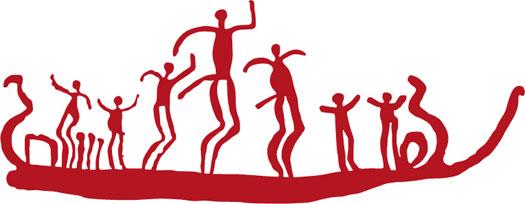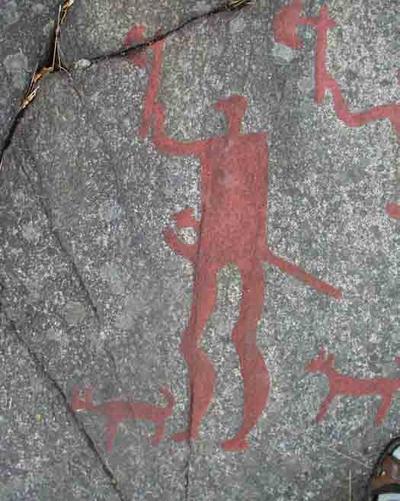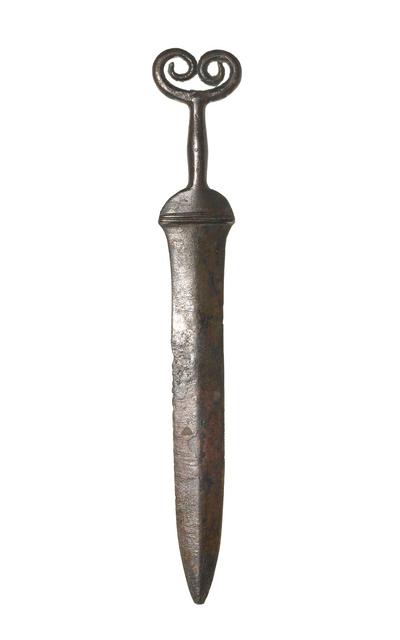Men carried swords
The man’s most valued possession was his sword. It became the most important weapon and was the faithful companion to men throughout the Bronze Age. The sword was not only a weapon in battle; it was a token of high rank. The spear and the lance were also important weapons, but they did not signify status in the same way as the sword. Many Bronze Age swords have been found in Denmark. Swords were placed as gifts in rich men’s graves and a sword could also be used as an offering to the divine powers, which inhabited the lakes and bogs.
Men and swords in rock carvings
In the area which is now Denmark the population was no more warlike than anywhere else. Although war and strife could be part of life, the sword was not only used for fighting. In the rock carvings one sees the sword as a part of the male costume, with the scabbard sticking out at the back. As a token of rank the sword was worn on festive occasions, at religious ceremonies and in processions. It is never seen being used in battle and no fallen warriors are shown in pictures.

A change in burial customs
In the LateBronze Age(1100-500BC) the burial customchangedfromground burialstocremation.The body was burned together with grave goods and deposited inanurnof clay, which was put downat the edge ofaburial mound.Gravegiftswere far moremodestand could consistof needles, buttons and toiletequipment asrazorsand tweezers. In urn burials the maleregalia could be a sword, which could be replaced by a miniatureof bronze.



